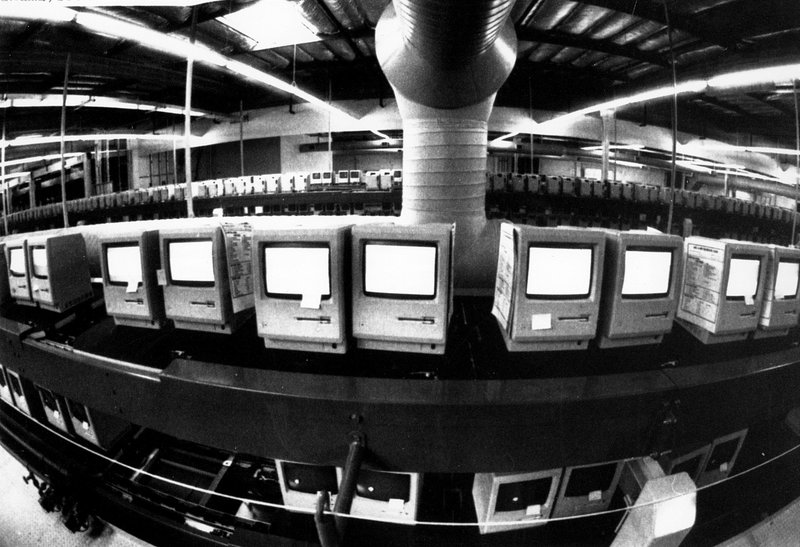NEW YORK — Look around. Many of the gadgets you see drew inspiration from the original Mac computer.
Computers at the time typically required people to type in commands. Once the Mac came out 30 years ago Friday, people could instead navigate with a graphical user interface. Available options were organized into menus. People clicked icons to run programs and dragged and dropped files to move them.
The Mac introduced real-world metaphors such as using a trash can to delete files. It brought us fonts and other tools once limited to professional printers. Most importantly, it made computing and publishing easy enough for everyday people to learn and use.
Apple sparked a revolution in computing with the Mac. In turn, that sparked a revolution in publishing as people began creating fancy newsletters, brochures and other publications from their desktops.
These concepts are so fundamental today that it's hard to imagine a time when they existed only in research labs — primarily Xerox's Palo Alto Research Center. Apple co-founder Steve Jobs and his team got much of its inspiration from PARC, which they visited while designing the Mac.
The Mac has had "incredible influence on pretty much everybody's lives all over the world since computers are now so ubiquitous." says Brad Myers, a professor at Carnegie Mellon University's Human-Computer Interaction Institute. "Pretty much all consumer electronics are adopting all of the same kinds of interactions."
Apple didn't invent these tools, nor was the Mac the first to use them. Xerox Corp. sold its own mouse-based Star computer, and Apple's Lisa beat the Mac by months. It's impossible to say what would have happened if those machines hadn't flopped with consumers or whether others would have come along if the Mac hadn't.
But the Mac prevailed and thus influenced generations of gadgets that followed.
The Mac owes much of its success to the way Apple engineers adapted those pioneering concepts. For instance, Xerox Corp. used a three-button mouse in its Alto prototype computer. Apple settled on one, allowing people to keep their eyes on the screen without worrying about which button to press.
While Lisa had those improvements first, it cost about $10,000. The Mac was a "low" $2,495 when it came out on Jan. 24, 1984.
25555231
